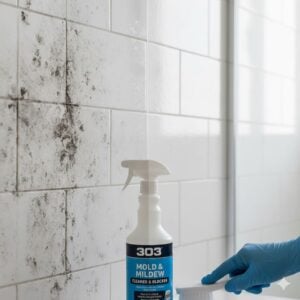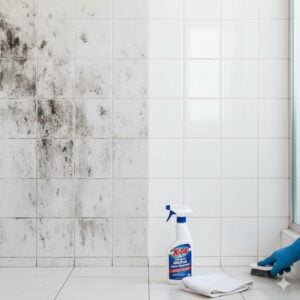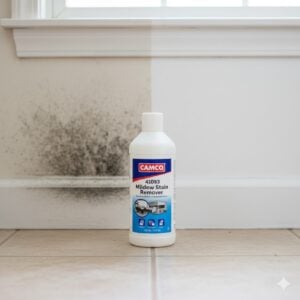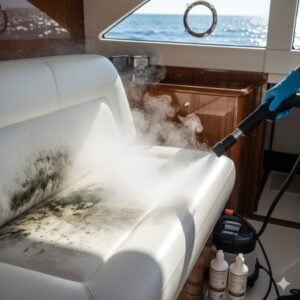Discovering mildew on your jacket can be frustrating — that musty smell, the small gray-green patches, and the fear that your favorite clothing is ruined. In humid climates like the UAE, mildew is a common problem, especially in wardrobes, storage rooms, or air-conditioned environments where moisture gets trapped. Understanding why mildew forms, how to remove it safely, and when professional help is necessary will save your wardrobe and your health. This guide explores eight main causes of mildew jacket problems, DIY cleaning tips, associated risks, and the best expert solutions to restore your garments.
Table of Contents
Toggle1. Storing Jackets in Humid or Poorly Ventilated Spaces
Humidity is the number one reason mildew thrives. When jackets are stored in closed wardrobes, damp basements, or rooms without airflow, spores multiply quickly. In UAE homes, air conditioners remove humidity from the air, but they can also cause condensation on cold surfaces, especially in closets near external walls. Over time, trapped moisture allows mildew colonies to grow inside fabric layers.
To prevent this, always store jackets in dry, well-ventilated spaces. Use silica gel packs or dehumidifiers to control moisture, and avoid plastic covers that trap humidity instead of blocking it.
2. Wearing Jackets Before They Are Fully Dry
Sometimes, after washing or getting caught in rain, people hang their jackets for a few hours and assume they’re dry. However, the inner layers — especially padding or lining — may still retain moisture. When you wear or store a damp jacket, mildew develops from inside out, leaving hidden colonies that produce a strong, unpleasant odor.
Always air-dry jackets under sunlight or in a ventilated area for at least 24 hours before storage. For thick winter or leather jackets, consider partial machine spin-drying and finishing with open-air drying.
3. Accumulation of Sweat, Oil, and Skin Cells
Body oils and sweat form organic residues that mildew feeds on. Jackets worn frequently, especially during workouts or travel, absorb perspiration in the collar, cuffs, and underarm areas. Without regular cleaning, these residues become a perfect nutrient source for mildew spores, which appear as faint yellow or gray stains before spreading.
Washing jackets regularly or spot-cleaning high-contact areas prevents mildew from starting. For leather or suede jackets, professional dry cleaning is essential, as water-based washing can damage the finish.
4. Storing Jackets Without Cleaning After Use
Even if your jacket looks clean, it collects dust, humidity, and microscopic organic matter. When stored for long periods, especially during off-seasons, this buildup creates an ideal environment for mildew. Wool, cotton, and blended fabrics are particularly vulnerable because they hold moisture more easily than synthetic ones.
Before storage, make sure jackets are clean, fully dry, and stored with moisture absorbers. Cover them with breathable fabric covers instead of plastic or nylon bags, which trap condensation.
5. Washing with Too Much Detergent or Without Rinsing Properly
Excess detergent leaves residue in fabric fibers, which mildew spores feed on. Over time, this creates a sticky layer that traps dust and odor. If jackets are not rinsed thoroughly, even clean garments can develop mildew within weeks of storage. Using too much fabric softener causes similar effects.
Use mild detergent and double-rinse cycles to remove all soap traces. Eco-friendly or enzyme-based detergents are recommended, as they clean deeply without leaving residue that encourages mildew.
6. Leaks, Spills, or High Indoor Humidity
Water leaks in storage areas, roof drips, or accidental spills inside closets can introduce unnoticed dampness. In the UAE, air conditioning systems sometimes leak condensate water that seeps into storage rooms. Over time, jackets stored near such areas become moist and prone to mildew without direct contact with water.
Regularly inspect your wardrobe’s surroundings for signs of leaks, condensation, or peeling paint. If you notice a persistent musty odor, remove all garments immediately and clean the interior walls before restocking.
7. Long-Term Storage Without Air Circulation
When jackets are sealed in boxes, suitcases, or vacuum bags for months, the lack of air circulation traps humidity and sweat residues. Even minimal moisture left inside is enough for mildew spores to reactivate. The result: a jacket that smells musty and shows discolored patches after months in storage.
Open closets periodically and air out stored clothes at least once every few weeks. For long-term storage, place charcoal-based moisture absorbers or use dehumidifying hangers designed for wardrobes.
8. Contamination from Nearby Mold or Mildew Sources
Sometimes mildew doesn’t originate from the jacket itself but from other contaminated items nearby. Damp shoes, carpets, or even moldy walls can transfer spores through the air. These airborne spores settle on fabrics and start growing once humidity rises above 60%.
Keep storage areas clean and check nearby items for early signs of mold. Even a small moldy corner on a wall can contaminate your wardrobe over time.
DIY Mildew Jacket Cleaning Methods
If the mildew is light and recent, you can attempt DIY cleaning before considering professional treatment. However, each material requires specific handling:
- Fabric jackets: Mix equal parts white vinegar and water. Spray lightly on the mildew area and scrub gently with a soft brush. Rinse and sun-dry completely.
- Leather jackets: Wipe with a cloth soaked in diluted rubbing alcohol (1:1 with water). Avoid soaking; leather absorbs water easily.
- Down or padded jackets: Use a mild detergent in warm water, spot-clean the mildew area, and let air-dry for 48 hours.
Always check the label before applying any DIY solution. Test on a small inner section to ensure color and texture remain unaffected. When drying, never use high heat — it can fix stains permanently.
Risks of DIY Mildew Cleaning
DIY methods can work for small stains but carry significant risks if not done properly:
- Color fading: Acidic solutions like vinegar can discolor dyed fabrics.
- Fiber damage: Over-scrubbing weakens natural fibers such as cotton or linen.
- Odor retention: Incomplete removal of mildew spores causes the smell to return within days.
- Health risks: Exposure to airborne mildew spores can trigger allergies or respiratory irritation.
- Permanent staining: Water-based DIY cleaning can spread mildew deeper instead of removing it.
DIY cleaning may appear simple but is rarely enough for serious mildew issues. Professionals have the right equipment to extract moisture, neutralize odors, and disinfect fabrics safely without ruining them.
Professional Mildew Jacket Cleaning with Bio-On UAE
Bio-On UAE specializes in advanced mildew removal using European-standard cleaning technology and safe, non-toxic solutions. Our process is designed to eliminate both visible mildew and invisible spores that cause odor and reinfection.
Here’s how we handle mildew-affected jackets:
- Inspection: Assess fabric type and level of contamination.
- Pre-treatment: Apply anti-fungal agent to neutralize spores before cleaning.
- Deep cleaning: Use specialized wet or dry-cleaning methods depending on material.
- Odor removal: Treat with ozone or steam to eliminate the musty smell.
- Sanitization: Apply anti-microbial rinse for lasting protection.
- Controlled drying: Use humidity-controlled drying chambers to prevent damage.
Unlike standard dry-cleaners, Bio-On UAE integrates disinfection into the cleaning cycle, ensuring your jackets are not only clean but hygienically safe.
Estimated Price for Professional Mildew Jacket Cleaning in UAE
Costs depend on jacket material, mildew severity, and cleaning method:
- Fabric jacket cleaning: AED 80–120
- Leather or suede jacket: AED 120–200
- Padded winter jacket: AED 150–250
- Severe mildew and odor treatment: Additional AED 50–100
Disclaimer: Prices are approximate. Bio-On UAE offers free inspection before confirming costs and ensures clients are notified of final pricing before cleaning.
Why Professional Cleaning Is Worth It
Professionals use pH-balanced solutions that kill mildew without damaging color or fibers. They also ensure complete drying, preventing mold from returning. This is crucial in humid areas like Dubai or Abu Dhabi, where mildew reappears easily. Moreover, professional cleaning extends jacket lifespan and prevents allergies linked to fungal exposure.
DIY cleaning often masks the problem temporarily, while spores remain active. Only professional disinfection ensures full eradication and restores the original texture and freshness of your jacket.
How to Prevent Mildew on Jackets
- Always dry jackets completely before storage.
- Keep closets ventilated and use dehumidifiers during summer.
- Clean and air out stored clothing every few weeks.
- Avoid plastic covers; use breathable fabric garment bags.
- Check for AC leaks or wall dampness near wardrobes.
These preventive steps significantly reduce mildew recurrence, ensuring your wardrobe remains fresh year-round.
Conclusion
Mildew on jackets is both an aesthetic and hygiene issue. While DIY cleaning may remove small stains, it often leaves behind moisture and odor, allowing mildew to return. Understanding the causes—from humidity to improper storage—helps prevent future problems. For complete and safe restoration, Bio-On UAE offers expert mildew jacket cleaning services using eco-safe treatments, anti-fungal solutions, and precision drying. If your favorite jacket has developed that stubborn musty smell, don’t risk home remedies — trust professionals who restore it safely, effectively, and permanently.













